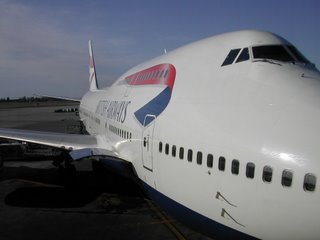IARU, MEMBER-SOCIETIES WANT BROADCASTERS TO END "BATTLE ON THE HAM BANDS"
As the so-called "Firedragon" jammer continues to transmit in one or more Amateur Radio bands, the International Amateur Radio Union (IARU) and three of its Region 3 member-societies so far have appealed to the jammer's target to move elsewhere. The Firedragon's all-music transmissions from thePeople's Republic of China (PRC) appear aimed at blocking the much-weaker broadcasts of the clandestine "Sound of Hope" (SOH), located outside the PRC.
Responding via e-mail September 5 to an inquiry from IARU Region 1 Monitoring System (IARUMS) Vice Coordinator Uli Bihlmayer, DJ9KR, the SOH said its supporters use various avenues "including Amateur Radio frequencies" to get their message into the PRC.
"Through our investigation, we learned that the transmissions of SOH programs through Amateur Radio frequencies come from areas around China, and they each only target a local area of China with very low power, only for the intended audience and would interfere with nobody else," said SOH's Yue Chen. Yue addressed the reply to "All Amateur Radio Community Members" and indicated it was copied to the International Telecommunication Union (ITU), although no ITU addressee was displayed. Yue encouraged the Amateur Radiocommunity to "openly urge the Chinese government to stop this outrageous act of radio jamming" and to urge the ITU to take action as well.
Wireless Institute of Australia (WIA) Director Glenn Dunstan, VK4DU, told the Sound of Hope via e-mail this week that if it wants the support of the international community, it should move its transmissions into legitimate broadcasting spectrum."There is more than enough radio spectrum for you to use outside of the Amateur Radio bands," Dunstan said September 5. "You are in breach ofinternational radio regulations."
A similar reaction came September 6 from Amateur Radio Society of India (ARSI) Monitoring System Coordinator B.L. Manohar Arasu, VU2UR, who pointed the finger at both the Sound of Hope and the Firedragon music jammer. "We, the Indian Amateur Radio operators, condemn both of you for using Amateur Radio frequencies," he said. "Please leave the frequencies clear at the earliest." Arasu suggested the jamming not only was bother some to every day hamming but could cause problems for emergency communication by radio amateurs.
New Zealand Association of Radio Transmitters (NZART) Monitoring Service Coordinator Len Martinson, ZL1BYA, e-mailed the Sound of Hope September 6 to say its "illegal broadcast transmissions" were causing unlawful and harmfuli nterference to the legal occupants of the Amateur Radio bands in question."Your transmissions are also attracting the attention of jamming stations,which is increasing the interference to unacceptable levels," he said."Please cease transmissions in the exclusive amateur bands immediately."
Writing SOH on behalf of the IARU, Secretary David Sumner, K1ZZ, asked the clandestine broadcaster to be more careful in its selection of transmitting frequencies. "Your operations in the 14 and 18 MHz bands have caused serious interference to the amateur radio service, which is allocated these bands (14.000-14.350 and 18.068-18.168 MHz) for two-way amateur radiocommunication," Sumner wrote. "Please do not operate in these or any other amateur radio bands.
"Bihlmayer said September 6 that the Firedragon was back on 14.050 MHz -- a part of the 20-meter band allocated to the Amateur Radio Service on an exclusive basis worldwide -- after spending two days on 14.400 MHz. Over the past several months, the jammer also has been heard on 10.135 MHz, 14.260MHz, 18.080 MHz and 18.160 MHz.The music jammer takes apparent monitoring breaks on the hour. When the jammer's carrier is off, Bihlmayer, who lives in Southern Germany, says he's heard a weak carrier on 14.050 MHz broadcasting a Chinese program that included speech.
ARRL Monitoring System/Intruder Watch Liaison Chuck Skolaut, K0BOG, says he's been able to hear the jammer from W1AW. In July, when the same jammer also was appearing on 18.160 MHz, Bihlmayer alerted telecom authorities in Germany and Hong Kong, as well as IARU Region 3 and the PRC embassy in Berlin to the situation. The 17-meter band also is a worldwide exclusive Amateur Radio allocation. Skolaut says he's received reports about the music jammer from all over the US, including Alaska, Hawaii and Puerto Rico.
Courtesy of The ARRL Letter Vol. 25, No. 36, September 8, 2006
 The next International Space Station crew plus the first female civilian visitor to the ISS lifted off from Kazakhstan early September 18. NASA astronaut and Expedition 14 crew commander Michael Lopez-Alegria, KE5GTK, and Russian cosmonaut Mikhail Tyurin, RZ3FT, will take over for the Expedition 13 crew of astronaut Jeff Williams, KD5TVQ, and cosmonaut Pavel Vinogradov, RV3B. Along for the ride as a paying passenger aboard the Soyuz TMA-9 "taxi flight" is US business woman Anousheh Ansari, who will visit the ISS for about 10 days under a contract with the Russian Federal Space Agency.
The next International Space Station crew plus the first female civilian visitor to the ISS lifted off from Kazakhstan early September 18. NASA astronaut and Expedition 14 crew commander Michael Lopez-Alegria, KE5GTK, and Russian cosmonaut Mikhail Tyurin, RZ3FT, will take over for the Expedition 13 crew of astronaut Jeff Williams, KD5TVQ, and cosmonaut Pavel Vinogradov, RV3B. Along for the ride as a paying passenger aboard the Soyuz TMA-9 "taxi flight" is US business woman Anousheh Ansari, who will visit the ISS for about 10 days under a contract with the Russian Federal Space Agency.